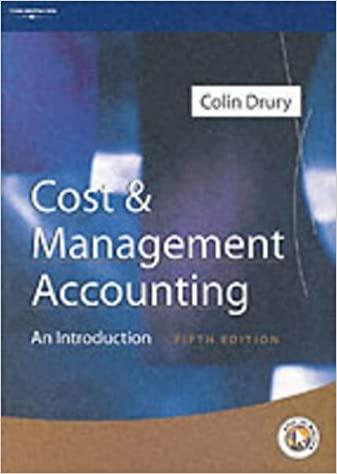Question
Joe and Doug Entity jointly started a business that required net operating assets of $1,000, consisting of $1,100 total assets (plant and equipment, inventory, accounts
Joe and Doug Entity jointly started a business that required net operating assets of $1,000, consisting of $1,100 total assets (plant and equipment, inventory, accounts receivable, etc.) less $100 of non-interest bearing liabilities (accounts payable, wages payable, taxes payable, etc.). The $1,000 net investment required to finance the business consisted of $300 invested in common stock by the more adventurous brother, Joe, and $700 loaned to the business by the more conservative brother, Doug, where the interest rate on the loan was 10%. Assume there are no taxes on this business so there is no tax expense.
These facts resulted in the following condensed balance sheet and income statement:
Assets (various) 1,100 Non-interest bearing liabilities 100
Debt (10% interest rate) 700
Common Stock 300
Total Assets 1,100 Total Liabilities and Equities 1,100
Operating Income (Revenue less all operating expenses) 150
Interest Expense (10% x $700) 70
Net Income 80
1. From the point of view of Joe, the equity investor for the firm, what is income to Joe and what is the amount Joe invested? (This is the proprietary perspective on performance, i.e., performance from the point of view of the equity investor.)
2. From the point of view of Joe and Doug, who constitute all of the investors in the firm (both equity and debt), what is combined income (income to Joe and income to Doug combined) and what is the amount invested (by Joe and by Doug combined)? (This is the entity perspective on performance, i.e., performance from the point of view of the equity and debt investors combined.)
3. When the company was founded, Joe and Doug discussed two alternative capital structures that could have provided the required $1,000 total investment: i) $100 of common stock purchased by Joe and a $900 loan from Doug, ii) $600 of common stock purchased by Joe and a $400 loan from Doug. Assuming for the sake of simplicity that the interest rate on the loan from Doug would still have been 10% for either of these alternative capital structures,
a) recalculate net income for each of the two alternative cost structures and then evaluate results for the year from the proprietary perspective for each of the two alternative cost structures.
b) Evaluate results for the year from the entity perspective for each of the two alternative cost structures.
Step by Step Solution
There are 3 Steps involved in it
Step: 1

Get Instant Access to Expert-Tailored Solutions
See step-by-step solutions with expert insights and AI powered tools for academic success
Step: 2

Step: 3

Ace Your Homework with AI
Get the answers you need in no time with our AI-driven, step-by-step assistance
Get Started


